Deep Friction Massage
What is a Deep Friction Massage?
Deep friction massage (DFM), also called cross friction massage, is a soft tissue massage that was founded by James Cyriax. The DFM is help to maintain the mobility of the soft tissue such as ligament, tendon, and muscle, and also help to prevent adherent scars from forming.
James Cyriax believed that deep frictions are useful for the treatment of tendinopathy, muscle strains, ligament lesions, and scar tissue healing.
As per name it is a deep massage and must be applied transversely to the soft tissue as compared to the superficial massage given in the longitudinal direction parallel to the vessels which improve blood circulation and also helps return of fluids.
Before starting Deep friction massage (DFM), you should relax the patient through proper postion and also performed proper evaluation procedure of the affected area. The difference must be made between connective tisue for example Muscle belly, musce and tendinous junction, tendon, and tendon insertion point and also on non-contractile structures for example fascia covering the muscle, ligament, bursae, the joint capsule.
Purpose of Deep Friction Massage Technique:
The role of the therapist is to reduce or prevention of the scar tissue formation that develops perpendicular to the myosin filaments, improve the proliferation of the fibroblasts in the scar, and increase the mobility of scar that won’t be a able to create pain when returning to day-to-day activities.
The aim of deep friction massage is to improve cell function in all soft tissues. Friction massage is supposed to used in:
- Traumatic hyperemia, which helps to remove pain that triggering metabolites.
- Movement of the affected body parts which helps to reduce adhesions formation and also helps improve the quality of scar tissue
- and mechanoreceptor stimulation.
- Stimulation of mechanoreceptors, creating a quantity of afferent stimulation that stimulate a temporary pain relieving effect.
- Fibroblastic proliferation, is helps for the healing or the regeneration of collagen.
- Realignment of collagen fibers, depends by the intensity of applied pressure.
Basic Principle of Deep Friction Massage
After proper evaluation/examination of the affected area, finding right area for the massage, the DFM-massage must also be given the most effectively by using the following the basic principles:
- The right area of the affected body parts must be found through proper examination procedures and palpation of the affected soft tissue such as tendon, ligament, or muscle.
- DFM-massage must be applied across the affected soft tissue. The Bulky and stronger a normal structure, the more important deep-friction is applied strictly across the body-parts.
- The therapist’s fingers and patient’s skin must move at the same time, if done wrongly- moving subcutaneous fascia opposite muscle or ligament may lead to blister formation or subcutaneous bruising.
- The DFM-massage must have enough glide and must be deep enough.
- The patient’s position must be in a comfortable position.
- The frequency and duration of Deep friction transverse massage varies with the severity and type of the injury. In a injury, such as ligament sprain, start initially with gentle massage to maintain mobility. It is also crucial for the therapist to differentiate between tenderness and pain.
- Tenderness can be due to deep soft tissue injury and can persist long time even after the pain disappears. Pain may evoke during clinical examination and assessment-reassessment. It is also applied every other day or when the tenderness gradually has decrease.
- The duration of the massage varies; such as in the condition of acute ligamentous injury, the gentle massage applied only 1-2 minutes. However, it may well take several minutes to be able to get your fingers on the affected area depending on the severity of condition and pain. With friction massage, the treatment will take upto 10-12 minutes.
Uses of Deep Friction Massage:
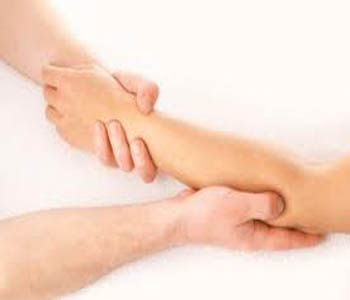
- Pain relief:
The pain relieving effect of the massage can up to 24 hours.
- Stimulation of fiber in healing of the soft tissue:
Transverse friction massage when applied in early repair cycle improve remodeling and also initiation of the collagen fibers in a continuing direction.
- Prevention of scar tissue adhesion formation:
As deep friction massage causes a transverse movement of the connective tissue that helps in reducing the adhesion formation and realign connective tissue fibres.
In condition where adhesion is already formed more intense deep friction massage can help to break them as well. In this condition friction massage is help to mobilize the scar tissue and break the cross linkages between the connective tissues and the
surrounding connective tissue.
- Traumatic hyperaemia:
As it deep friction massage movement effectively increased blood flow to the local area of application through vasodilatation effects. This helps in the removal of chemical irritants and allow the transportation of endogenous opiates, thus causing helps in pain relief.
Types of Deep Friction Massage Techniques
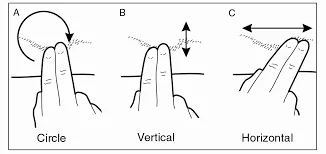
There are mainly 3 types of DFM Techniques:
- Circular
- Vertical
- Horizontal
Deep Friction Massage Techniques:
The following rule of deep friction massage are:
- Proper evaluation and Diagnostic movements and palpation must be carried out for the exact location of that tissue.
- The therapist’s fingers and the patient’s skin must move simultaneously to avoid re-injury to the skin.
- The friction massage must be given perpendicular to the connective tissue’s fiber for the smoothen the scar.
- The friction massage must be given with sufficient glide to assure that the whole scar is treated.
- The massage must be given deeply and applied within the patient’s pain tolerance. The pain will gradually reduce during the massage.
- The patient’s position must be relax and adequately expose the tendon.
- If the lesion located in the belly of the muscle, the muscle must be put on relax. This will help in separation of the
- muscle fibers during the massage.
- Tendons with a sheath must be put on a elongated position to assure the maximise the result of the massage.
Deep Tissue Massage for Plantar Fasciitis:
When should you not use friction massage?
Following are the list of condition in which you should not to use friction massage:
- Myositis Ossification and calcification of soft tissues
- Rheumatoid tendinous lesions
- Ulcers, blisters, or psoriasis
- Bacterial infections
- Large hematomas in the area
- Bursitis
- Local sepsis
- Any local skin diseases
- Fragile or friable skin
Conclusion:
After a soft tissue injury or surgery, you may develop scar tissue formation or tissue adhesions that restrict your normal movement. A physical therapist may use deep friction massage as part of your treatment plan.
The therapist uses their fingers to massage your scar area in a direction that is at right angles to the line of the scar. This technique may help enhance scar tissue and improve mobility so you can move better.

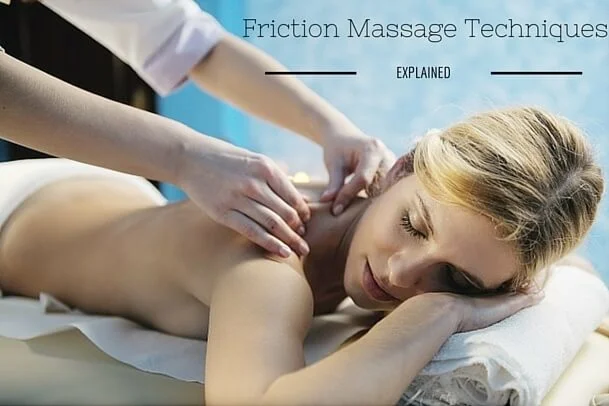
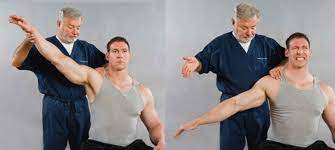
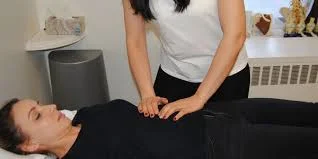

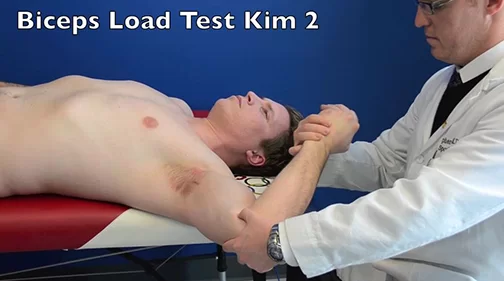

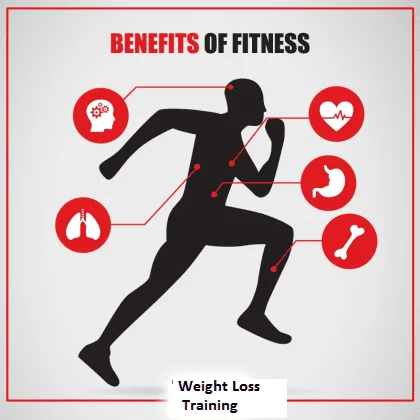
One Comment